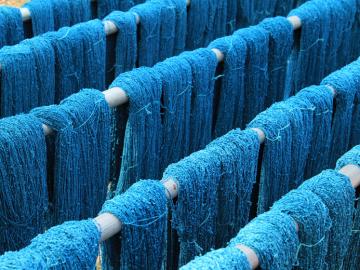News & Updates
Matex News

BEIJING – The global textile dyeing sector is struggling to deal with sky high prices after tougher environmental legislation in China forced the closure of intermediate factories and severely restricted the supply of key ingredient chemicals.
New information obtained by Ecotextile News reveals that some of the largest intermediate suppliers in Jiangsu province have shut down completely after a series of environmental transgressions and serious industrial accidents.
One supplier told us: “The impacts are huge, and supplies seem likely to get very, very tight. Hopefully the big brands will realise they will now have to pay more for their dyed textile goods.”
In some instances, the price of disperse dyes are significantly higher than in 2013 which was historically known as the high price point for textile intermediates – yet today’s prices for some orange shades are even said to be 70 per cent higher than they were back then.
We all want a cleaner world to live in and this means a cleaner way of doing business. In our industry, this is especially true when it comes to the dyeing and finishing sector but, ironically, it appears that tougher environmental regulations being applied to dye intermediate suppliers in China could put undue pressure on environmental compliant textile formulators outside Asia.
Since new environmental regulations were introduced in China – most notably from early 2015, over the last two years we have seen reports of at least 10 serious environmental incidents related to textile intermediates in the regions of Jiangsu, Zhejiang, Ningxia and other regions with the latest being failed inspections and closures at the Lianyungang Chemical Park in March this year.
As stocks of these chemicals have run down in China, the resultant scarcity of building blocks for textile dyestuffs and auxiliaries is now playing out through very short supplies and very high prices.
We also understand that the second biggest indigo producer in China has been issued a shutdown notice for the whole of June. Indigo dye prices are now expected to rise significantly.
We contacted several European suppliers of textile dyes and other formulations for wet processing one of whom told us: “I can confirm that in 20 years of being the sole purchaser of dyes in the company, I have never seen prices like this on top of the lack of supply from China. Acid Blue 350 was around US$ 40/kilo, but now it’s over US$ 80/kilo. Another example – Acid Black 194 – the commodity dye price in quoted in October 2017 was US$3.05/kilo; but ordered pre-shipment samples on May 2nd were being quoted at USS$ 4.55/kilo. This was received on May 11 and tested for compliance on May 15th but were told that if we wanted another batch it would be US$ 5.55/kilo – a 19 per cent increase in just a few days!”
These rising raw material costs due to new environmental regulations in China have also compounded a costly situation for compliant SMEs that supply dyes and chemicals to the industry. So much so, that some companies say they are struggling to operate due to the current situation of spiralling costs and an escalation in the amount of red tape involved.
“Every day we spend hours checking through brand RSL's looking for minute changes to details, then we back check products for compliance, it’s a ludicrous waste of resources for absolutely no benefit that I can see,” noted another European formulator who again requested anonymity. This company, which is also certified to Oeko-Tex, and has products compliant with the ZDHC MRSL (and feeds into the ZDHC Gateway) also notes that: “REACH average costs are 37,500 Euros per product – not including any additional testing costs which themselves could run into thousands of Euros … so how can we justify all these additional costs on that basis, especially with our smaller volumes.” [The big chemical companies who can leverage economies of scale, but also have onerous requirements.]
Frankly, he says, there are now ‘enough compliance programmes’ and he calls for brands to align with ‘just one or perhaps at the most two’ of the most reliable chemical management standards, “but none should be compulsory due to limitations on product development and sales volumes due to costs of some of those schemes.”
Yet, it’s these types of long-term, small-medium EU-based (or maybe even US based) complaint suppliers of textile formulations, that offer REACH compliant chemistry, and who have invested in credible third-party environmental certification that are now under the most pressure due to the volatility of the dyestuff intermediates and the sky-high raw material prices coming from China.
It’s worth remembering that if smaller companies like this fold, not only would it leave brands and textile mills with less choice when sourcing their formulations, but it would leave retailers open to the vagaries of the currently opaque Asian SME chemicals sector and the associated questionable MSDS system, which can be abused and hamper environmental progress in our industry.
At times like these it’s easy to ask brands to be more receptive to requests from suppliers to be able to pass on extraordinary costs. After all, a cleaner way of doing business is never going to come free of charge – and dyestuffs typically make up less than 5 per cent of the cost of making a garment.
If retailers and brands want more choice and innovations in textile dyeing from transparent and environmentally compliant suppliers, is this really too much of a price to pay?
For more information, please visit: https://www.ecotextile.com/2018061823554/dyes-chemicals-news/china-shutdowns-squeeze-textile-dyeing-industry.html






